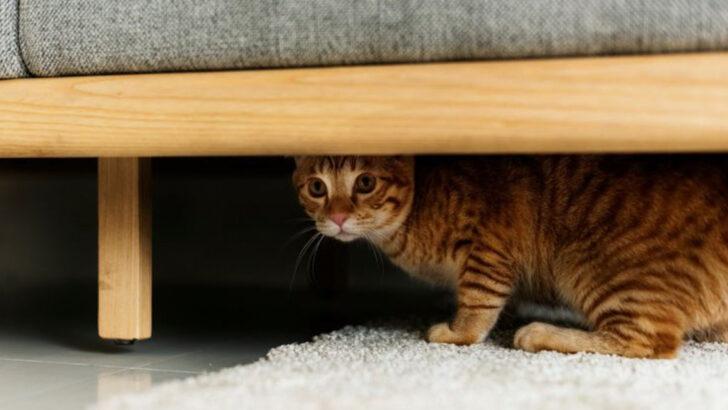Your cat might be silently screaming—and you’re not hearing it.
Stress in cats doesn’t always come with hissing, scratching, or dramatic exits. Sometimes, it’s a twitch of the tail. A sudden hiding spot obsession. A full bowl left untouched.
They’re masters of mystery, but their behavior always tells a story.
And when that story changes, even a little, it’s your cue to pay attention.
We’re diving into the subtle signals your cat sends when the world feels too loud, too strange, or just too much.
Because a calm cat is a happy cat—and you’re the key to getting them there.
Increased Scratching
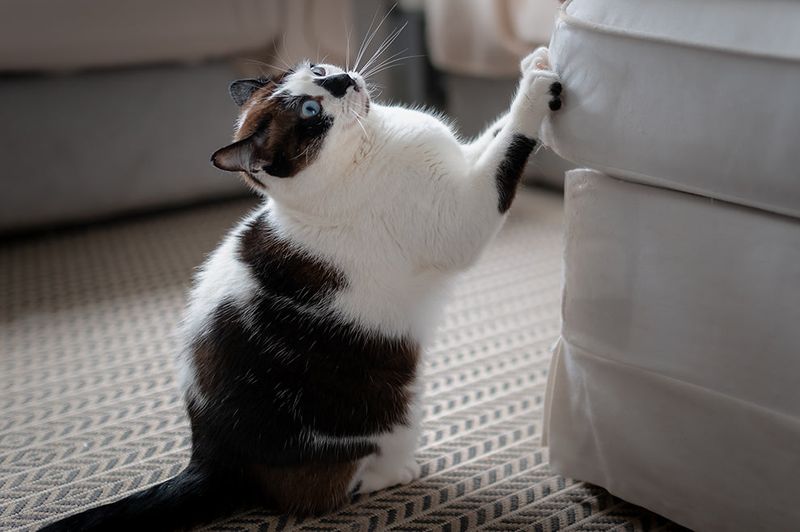
If your cat is turning your furniture into a scratching post more than usual, it might be a sign they’re stressed. This behavior can be their way of coping with anxiety, releasing pent-up energy or marking territory.
Try providing various scratching surfaces, like posts or mats, to see if this alleviates the issue. Consider using catnip or treats to encourage them to use the new scratching options.
Engaging your cat in play can also help release stress. Spend time with interactive toys, focusing on what they enjoy the most, whether it’s chasing or pouncing.
Excessive Grooming
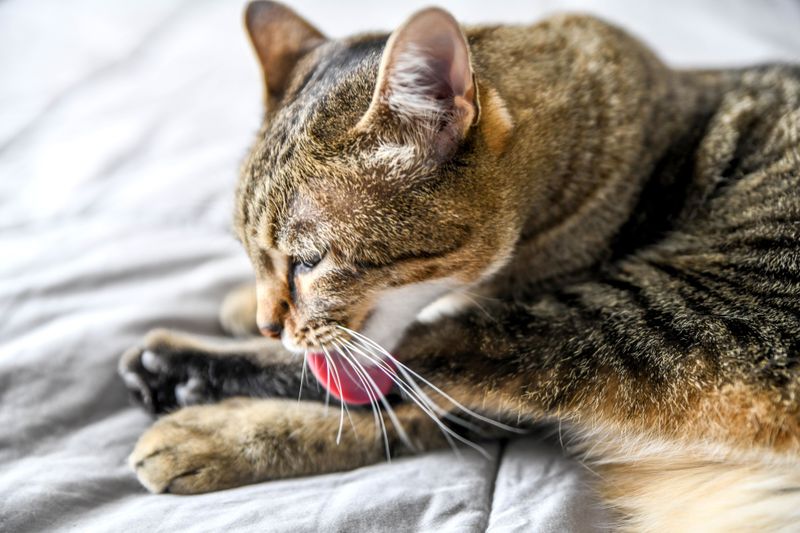
When a cat grooms excessively, creating bald patches, it’s often a sign of stress. This over-grooming may be due to changes in the household, like a new pet or person, which can make your cat feel uneasy.
To help, create a calm environment and stick to a routine to reassure them. You can also try pheromone diffusers to create a sense of security.
Engage them in play and provide mental stimulation to redirect their focus. Consult your vet if the behavior persists, as it could indicate underlying health issues.
Change in Appetite
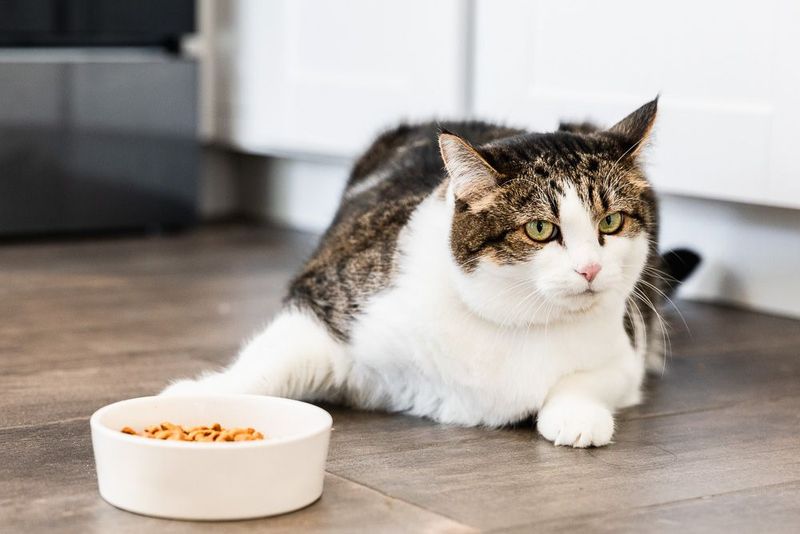
A sudden change in your cat’s eating habits, whether eating less or more, can signal stress. It might be triggered by a new environment, routine, or diet, causing anxiety.
Ensure their feeding area is quiet and safe, away from disturbances. Try maintaining a regular feeding schedule and offering familiar foods to provide comfort.
If appetite changes persist, consult your veterinarian, as it could be related to health problems. Monitoring their weight and behavior can help identify patterns or triggers causing the stress.
Increased Vocalization
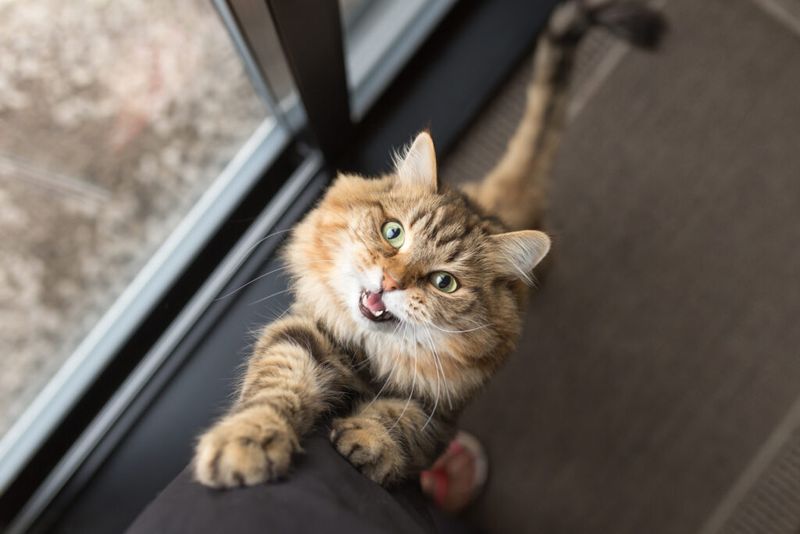
If your cat suddenly becomes more vocal, with frequent meows or yowls, it might be expressing stress or discomfort. This behavior can be their way of seeking attention or alerting you to changes in their environment.
Spend quality time with your cat, offering affection and play to help them feel secure. Check for potential stressors like new furniture, loud noises, or other pets.
Consider consulting a veterinarian if vocalization continues, as it might indicate medical issues like hyperthyroidism or pain.
Litter Box Avoidance

Ignoring the litter box can be a subtle sign your cat is stressed, possibly due to changes in the home or the litter itself. This behavior might indicate they’re marking their territory, feeling unsafe, or experiencing health problems.
Maintain a clean litter box and try different types of litter to see if preferences change. Offer multiple litter boxes if you have several cats, ensuring they feel comfortable and secure.
Consult your veterinarian if this behavior persists, as it could involve urinary tract issues.
Hiding More Often
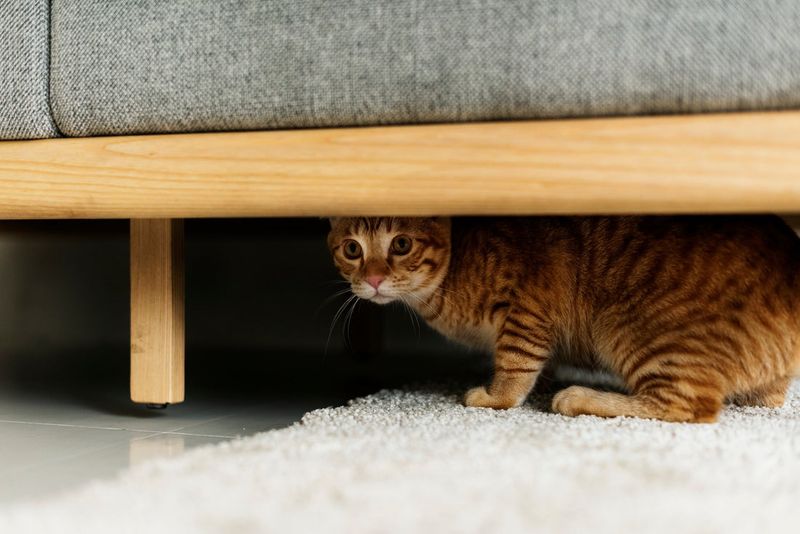
When cats retreat to hiding spots more frequently, it can be their way of escaping stressors. This behavior might be due to changes in their environment, such as new pets, people, or alterations in their routine.
Ensure they have safe and quiet spaces where they can retreat and feel secure. Offer comforting toys or treats to encourage them out of hiding.
Observe their interactions with other pets or household changes to identify triggers. Consult a vet if hiding continues, as underlying health issues may also cause this behavior.
Aggression Towards Others
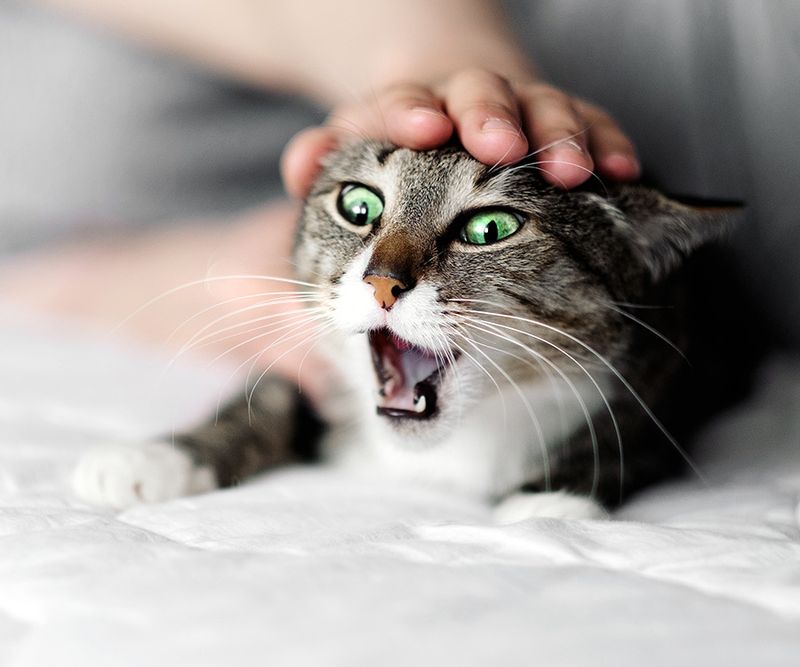
Increased aggression, whether towards people or other animals, can be a red flag for stress in cats. This behavior might stem from fear, anxiety, or a perceived threat in their environment.
Provide separate spaces for each pet and ensure they have enough resources like food, water, and resting areas. Gradual reintroduction with positive reinforcement might help ease tensions.
If aggressive behavior continues, consulting a veterinarian or animal behaviorist can provide tailored strategies to reduce stress and improve relations.
Clinginess or Separation Anxiety
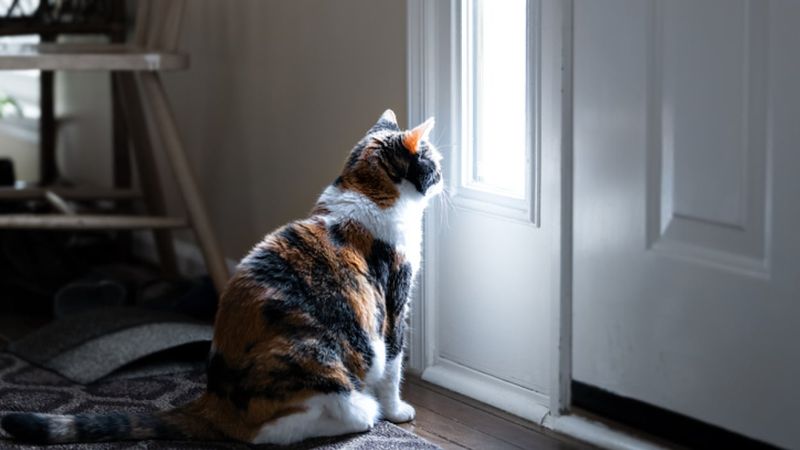
A cat that becomes unusually clingy or shows signs of separation anxiety could be experiencing stress. This might happen after changes in the household, like a new baby, moving, or changes in your schedule.
Spend quality time with your cat, offering affection and play to reassure them. Leave them with comforting items like blankets or toys when you’re away.
Consider gradual desensitization and consult a vet if anxiety persists. Providing a consistent routine and environment can help them feel more secure.
Changes in Sleeping Patterns
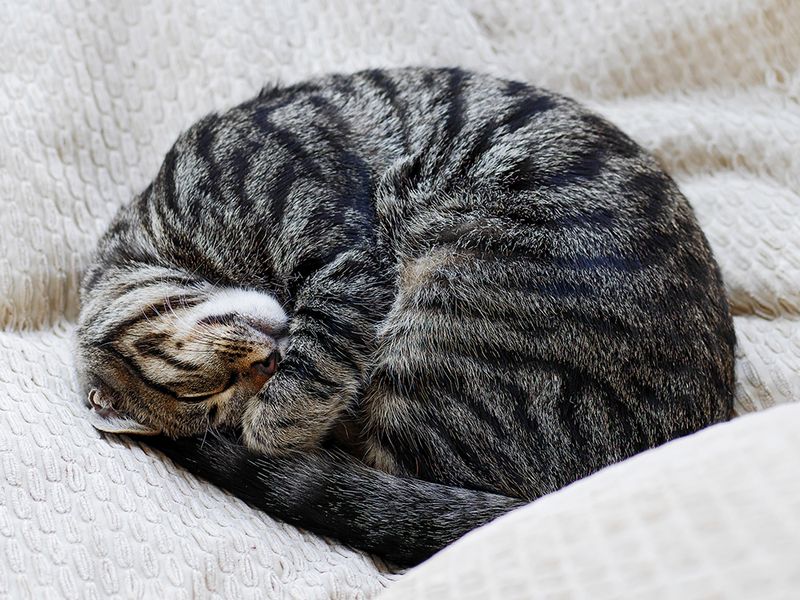
If your cat’s sleeping habits change, such as sleeping more or less than usual, it could indicate stress. This change might be due to disruptions in their environment or health issues causing discomfort.
Ensure your cat has a comfortable and quiet sleeping area away from disturbances. Maintain a consistent routine to help them feel secure.
Consult your vet if changes in sleeping patterns persist, as it could be related to health conditions or environmental stressors affecting their well-being.
Excessive Shedding
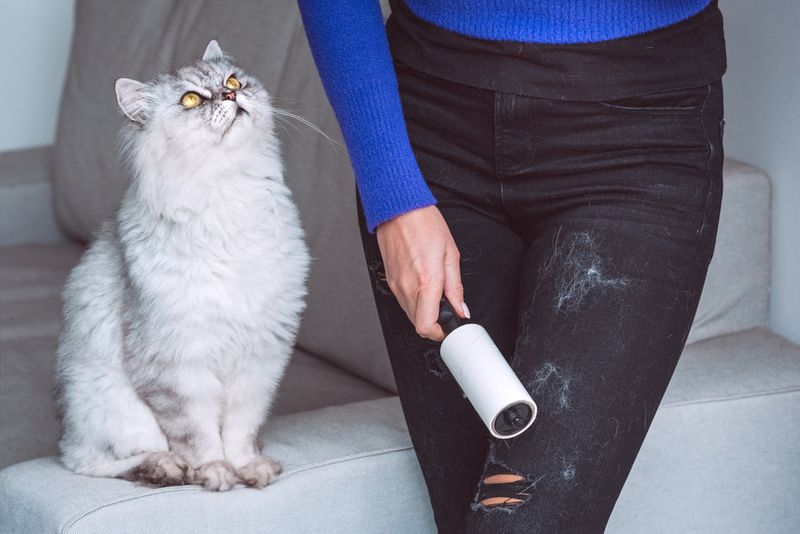
While shedding is normal, excessive fur loss can signal stress in cats. It might stem from environmental changes, like a move, or seasonal changes affecting their comfort.
Regular grooming sessions can help manage shedding and provide bonding time, reducing stress. Ensure your cat’s diet is balanced, as nutritional deficiencies can exacerbate shedding.
Consult your veterinarian if the shedding is accompanied by bald patches or skin irritation, as underlying health issues might be present.
Dilated Pupils

Dilated pupils can be a physical indication of stress in cats, often seen when they’re anxious or frightened. This response might be triggered by a sudden change or perceived threat in their environment.
Try to identify and remove potential stressors, providing a calm and safe space for your cat. Spend quality time engaging in play or relaxation to help them feel secure.
If dilated pupils persist, consult your veterinarian, as it could indicate medical issues like hypertension or neurological disorders.
Urinating Outside the Litter Box

Finding urine outside the litter box is a common stress indicator in cats. This behavior might be due to environmental changes, like a new pet or rearranged furniture, disrupting their routine.
Ensure the litter box is clean and accessible, away from noisy areas. Experiment with different litters or box types to find what your cat prefers.
Consult a veterinarian if the behavior continues, as it might be linked to health issues like urinary tract infections.
Panting or Heavy Breathing
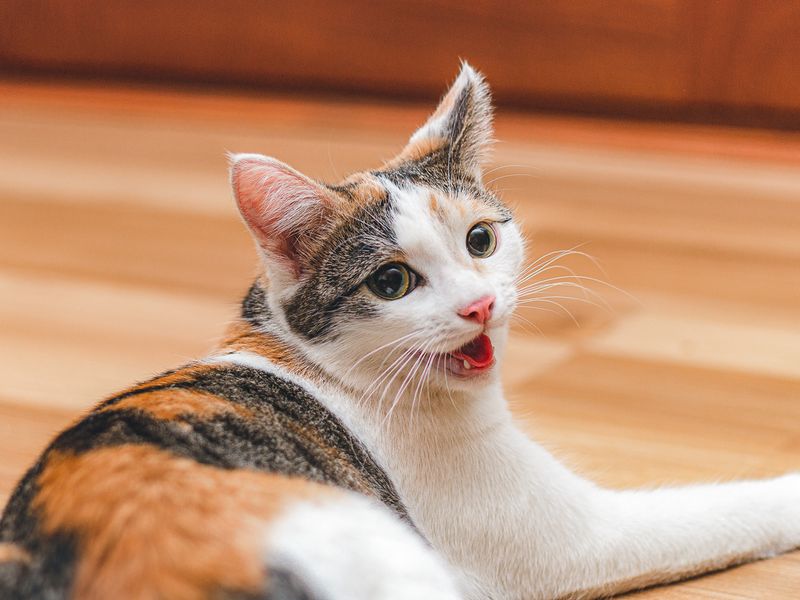
While panting can be normal after play, unusual heavy breathing might indicate stress or health issues. This could be due to anxiety, overheating, or excitement overwhelming them.
Ensure your cat is in a cool, calm environment, and provide plenty of water. Avoid stressful situations and allow them to rest if they show signs of distress.
Consult your veterinarian if heavy breathing continues, as it could indicate respiratory or cardiac problems.
Unusual Body Posture

A cat adopting an unusual body posture, like an arched back or puffed-up fur, can signal stress or fear. This posture is their way of appearing larger to ward off perceived threats.
Identify potential stressors, such as new pets or loud noises, and remove them if possible. Provide a secure and comforting environment where your cat feels safe.
Engage in calming activities like gentle petting or play to reassure them. Consult a veterinarian if the behavior persists, as it could indicate underlying health issues.

